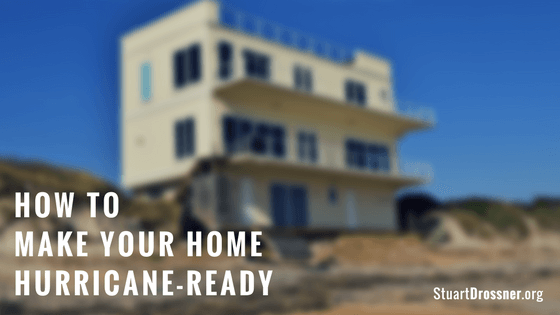
In the wake of destruction left behind by Hurricane Irma, Miami and all of South Florida were as resilient as they could be in terms of sustaining homes and buildings, many of which having successfully weathered the storm. For those looking to buy properties in the South Florida area, or throughout the state in general, preparing for hurricanes comes as a necessity.
Now that the worst of the 2017 hurricane season has seemingly come to an end, there is no better time to brace your home for the impending storms next year may bring. You can never be too late or too early, especially for Miami and South Florida residents.
A house is one of the largest financial investments you will ever make in your lifetime. Allowing it to succumb to the devastating effects of a storm because of poor planning would be foolish, and ultimately, an enormous financial cost. However, it would be best to preface this by saying that your life is more important than your house. Should orders be given to evacuate, do not hesitate to do so.
To start, look over your insurance policies to be certain that any damage your home endures is covered. A common theme is to insure one’s home based on its value. But, the cost of repair can exceed that number fairly quickly. To accommodate, look into the proper forms of insurance for your location (i.e. flood insurance). While water damage is typically covered during a storm, the floods that follow pose a different problem, and are often disregarded by home insurance policies.
Your home’s roof can quickly become a gateway for rain and debris in the event of extreme winds. Sealing and securing this as best is you can should be a priority. No matter if you have shingles or tiles, inspecting them to look for any cracks beforehand can prevent existing damage from worsening. Consider having your roof professionally repaired. The cost of this is much less than that of losing your home entirely.
Here in Florida, the construction industry has a policy in place that requires builders to connect a house’s roof to its walls with metal straps. In a similar fashion, homeowners should do the same to porches, carports, and anything else that has the potential of ripping off the side of the house. Firmly securing these to the ground is the first preventative measure to implement.
Sealing windows, doors, and any holes throughout your home is another strategy that can prevent excess water from entering. Think about any areas where cables or electric wires of any sort enter the exterior of your home. These have created holes as well.
Preparing your home for a hurricane, or natural disaster in general is never an aspect of homeownership that people want to do, but it is crucial, especially for those in areas prone to this weather. Consider any of the aforementioned tips to best protect your home if you haven’t done so already, and make sure your biggest financial investment has the best chance of withstanding heavy rains and high winds throughout the season.

